On the Way to Fairbanks, Alaska !
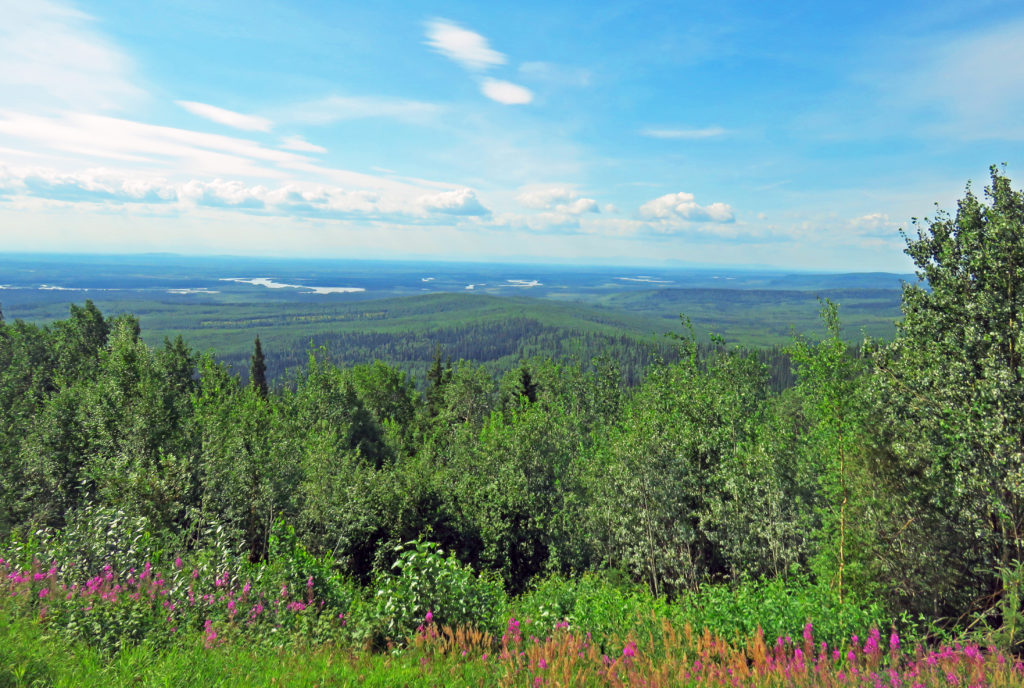
A beautiful view of the Tanana Valley south of Fairbanks.
July 23, 2017
It was another sunny, crisp Alaska morning as we joined Kayli and our group in front of the Gold Nugget Saloon in Denali Center. At 9 a.m. we boarded our coach bus for a three-hour trip to Fairbanks. Half way there we stopped at a very eclectic rest stop. It was part store, part campground, part museum and part flower garden. There were lots of strange items scattered about the property for us to explore including a functioning two-seater airplane, a river fish wheel, an old drive plow made from an ancient truck, rusty mechanized sleds, a greenhouse full of vegetables, and lots of flower boxes and flower beds.
We re-boarded the bus and arrived in Fairbanks. After lunch we headed twenty minutes outside of Fairbanks to Fox, Alaska to explore Gold Dredge 8. Our first stop on the tour was a close-up view of the Trans-Alaska Pipeline. The pipeline connects the oilfields of Prudhoe Bay in northern Alaska to the harbor of Valdez 800 miles to the south. Oil started flowing through the 48-inch diameter pipes in August of 1977. Our guide provided a briefing on the pipeline, its design, how it worked, and how “smart” and “dumb pigs” (monitors) work.
The “dumb” pigs, matching the shape of the interior pipe wall, are pushed through the pipeline by oil, cleaning accumulated deposits and enhancing pipeline flow as they travel. The “smart” pigs, have high-tech circuitry that enables them to record images of the pipe using ultrasonic and magnetic sensors. These oinkers measure pipeline curvature and inspect for corrosion, changes in pipe diameter and other problems requiring maintenance. The name pig is an acronym for pipeline inspection gauges.
Because of the varying soil conditions along its route, the pipeline is both above and below ground. Where the warm oil would cause icy soil to thaw and erode, the pipeline goes above ground. The foundations are designed to allow for movement and earthquakes up to magnitude 8.5. Where the frozen ground is mostly well-drained gravel or solid rock, and thawing is not a problem, the line is underground. We could see such a section running up a nearby hill. The right of way above the pipeline is kept clear-cut.
Next, we boarded a small open-air train and were on our way to Gold Dredge 8. We passed by many samples of gold mining technology, stopping occasionally for explanations and live demonstrations by the staff. When we arrived at the dredge we learned about the history of mining in Fairbanks.
Gold Dredge 8 operated between 1928 and 1959 and played an essential role in mining and the economy of the Tanana Valley. In 1984, it was listed as a Historic District on the National Registry of Historic Places. It was originally built by Bethlehem Steel in Scranton, Pennsylvania and outfitted with General Electric motors. It was disassembled, shipped to Fairbanks, then reassembled. Power was supplied via cables from a power plant in Fairbanks. Later we got to tour the inside of the dredge.
A gold dredge is a mining machine that extracts gold out of sand, gravel, and dirt from stream beds and alluvial deposits using water and mechanical methods. Gold Dredge 8 used steel buckets on a circular continuous bucket line at the front of the dredge to excavate the material. The material was then dumped into a steel rotating cylinder called a washing trommel, and with the addition of nine thousand gallons of water a minute the coarse rocks, sand and dirt were sorted. Small holes in the cylinder allowed undersized material (including gold) to fall into a sluice box. Since the gold was heavy it settled to the bottom. Every two weeks the dredge would be shut down and the gold collected.
After we exited the train, we were led to a nearby covered area with rows of benches around water-filled troughs. Each of us received a gold pan, a small bag of gold ore, and a small plastic container to hold the results of our panning efforts. Earlier while on the train we had received a gold panning lesson. Now it was our turn to try it using the dirt in our little bags. Employees walked around giving assistance and pointers as needed. We were both successful once we figured out the swirling and non-gold removal technique. The little flecks of gold remaining in our pans were placed into the plastic containers for weighing. According to the scales my haul was twelve dollars and Rodge’s thirteen dollars! We’d hit the Mother Lode!
At 4 p.m. with gold in hand we jumped back on the bus for the final leg to the hotel. Since our lodging for the night was a ways from downtown Fairbanks and it had been a full day, we decided not to venture out that evening. It was a great opportunity for a laundry run! Tomorrow Dawson City.
Later,
Kathy
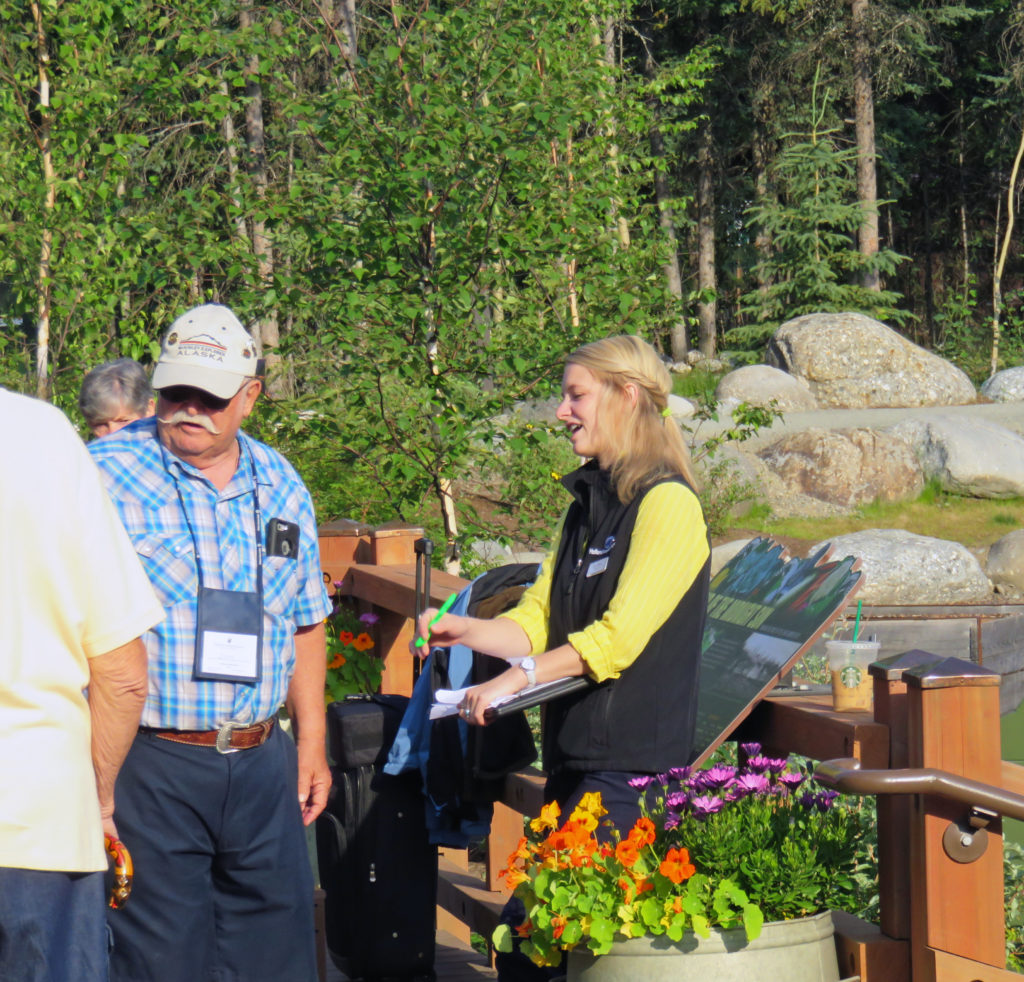
Kayli checking off her group as they arrive to board the bus.
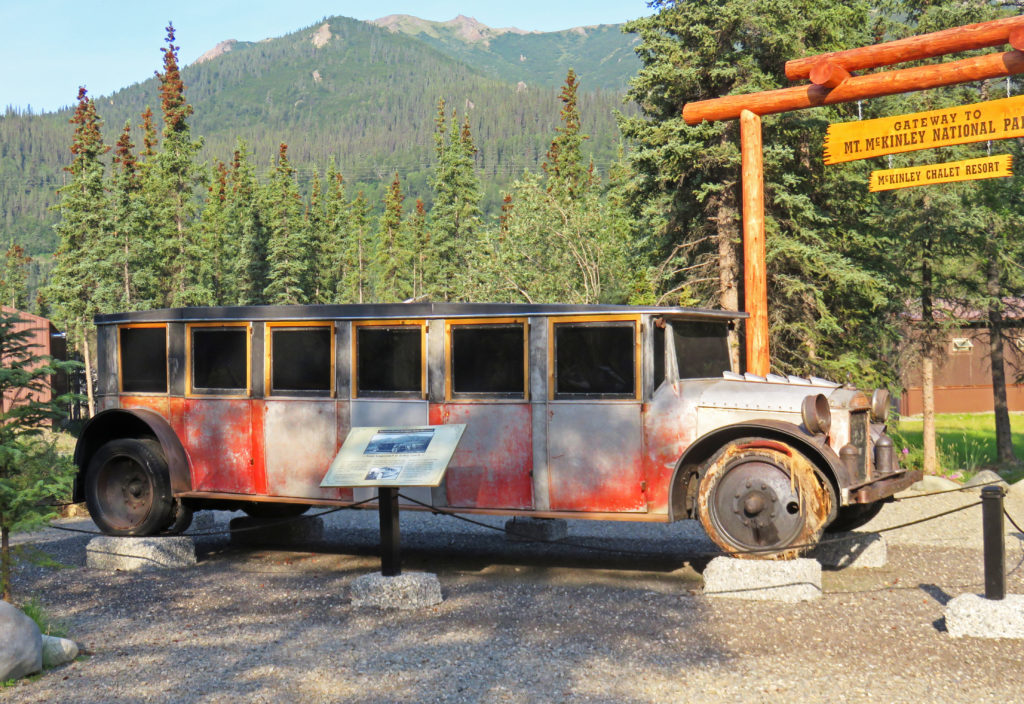
A 1924 Safety Coach could drive 22 tourists around Denali National Park.
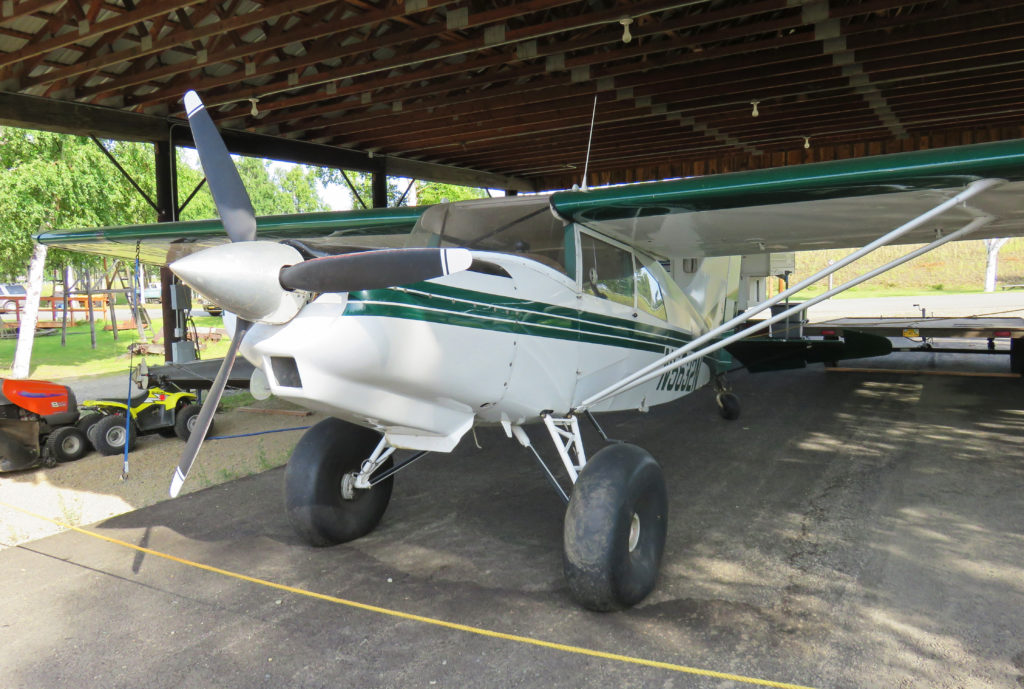
We discovered a two-seater airplane at our rest stop.
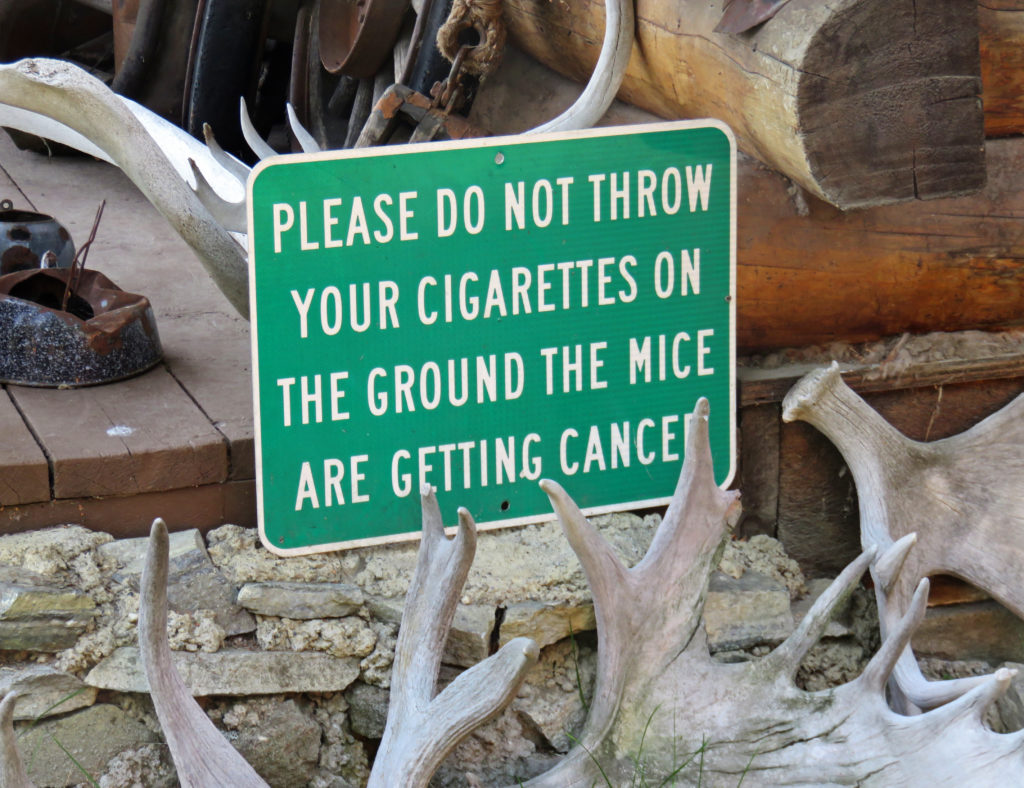
A sign of the times.
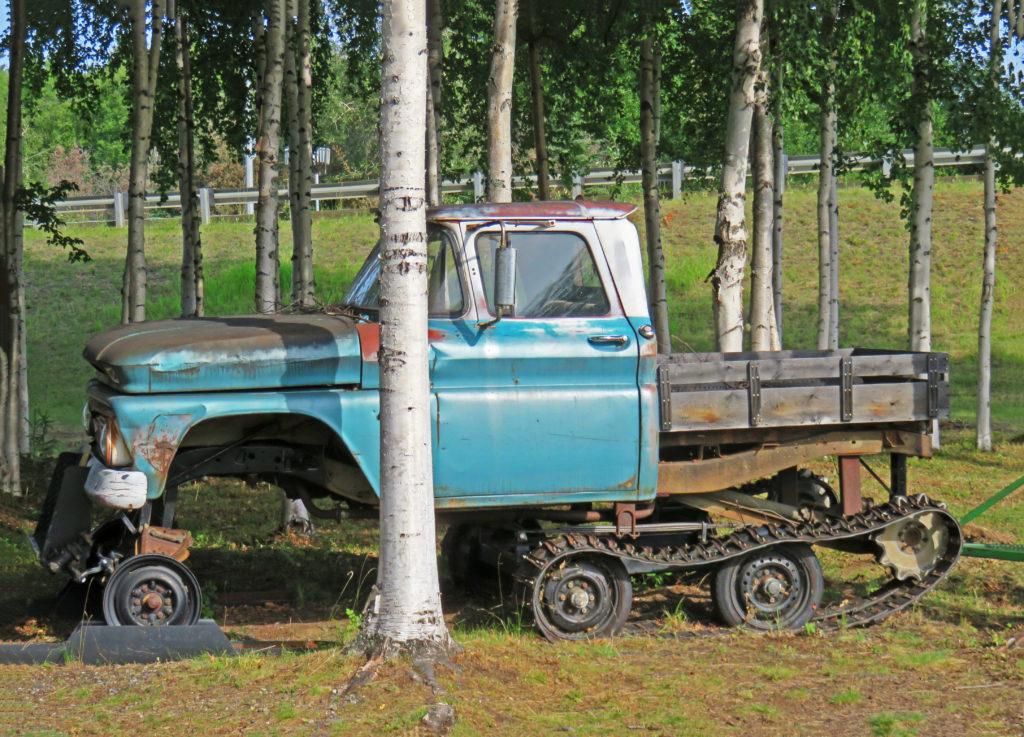
An old drive plow made from an ancient truck.
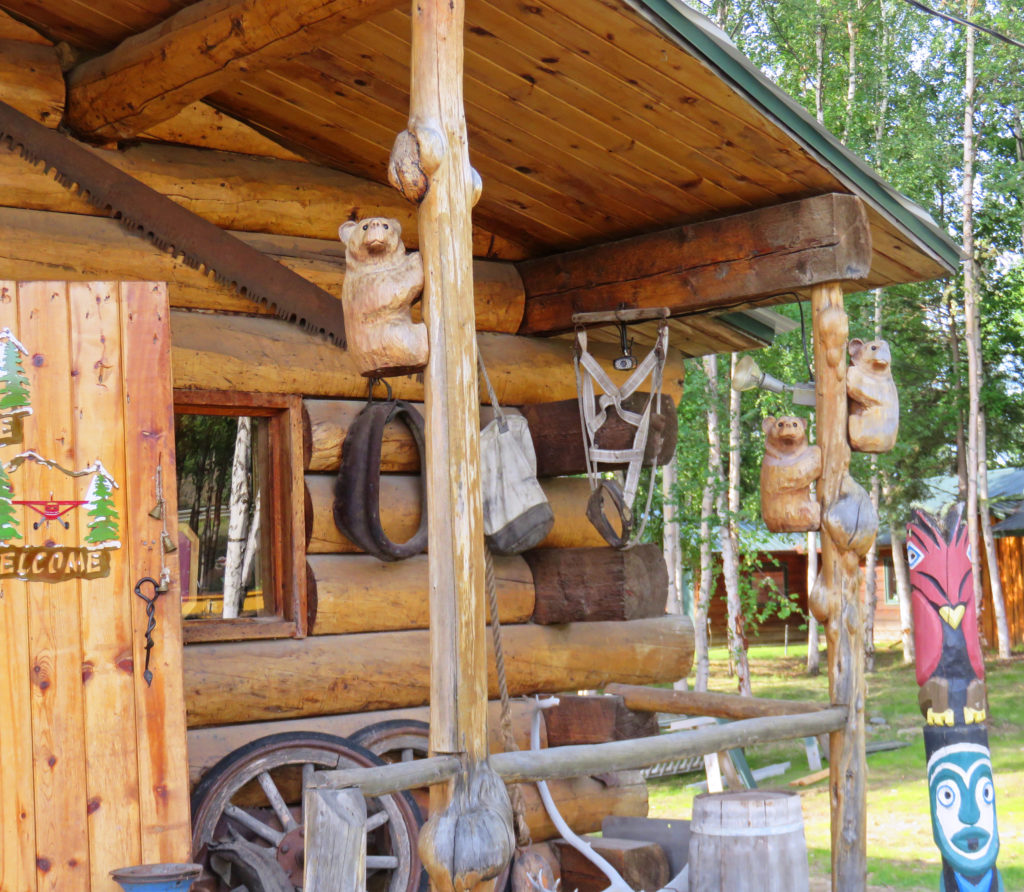
Carved bears guarding the store.
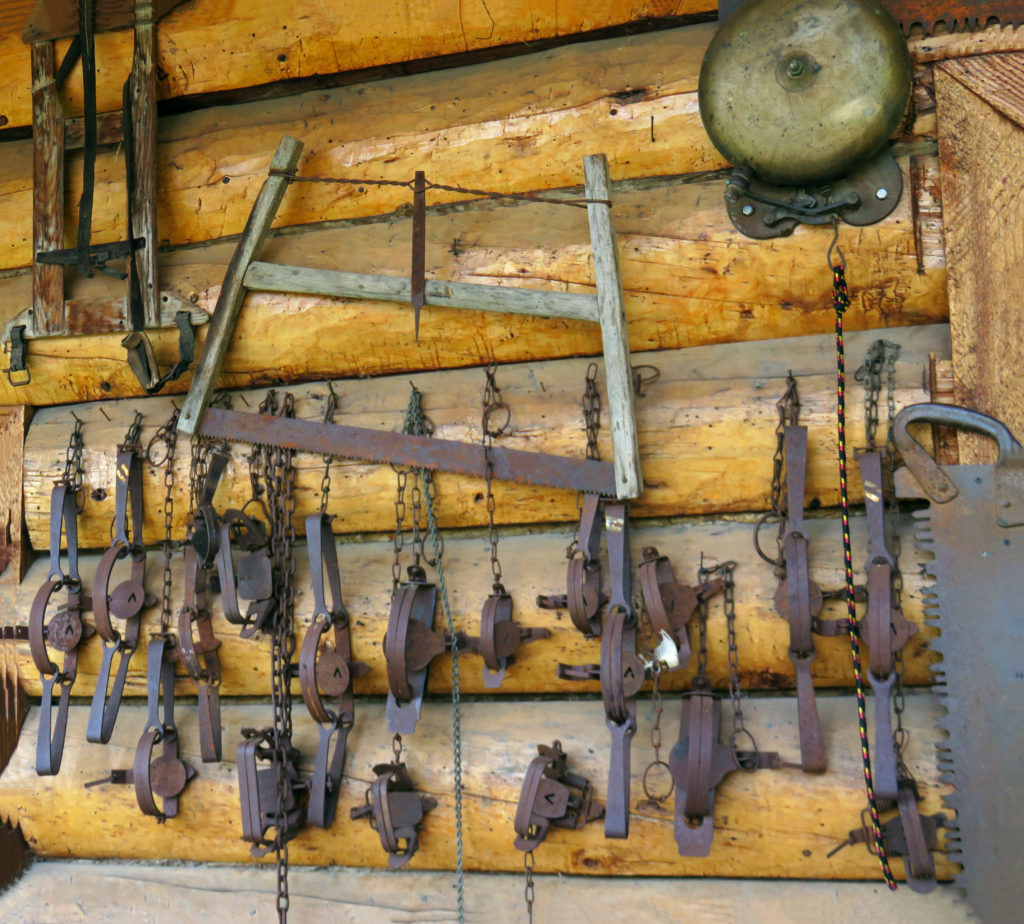
An old collection of traps.
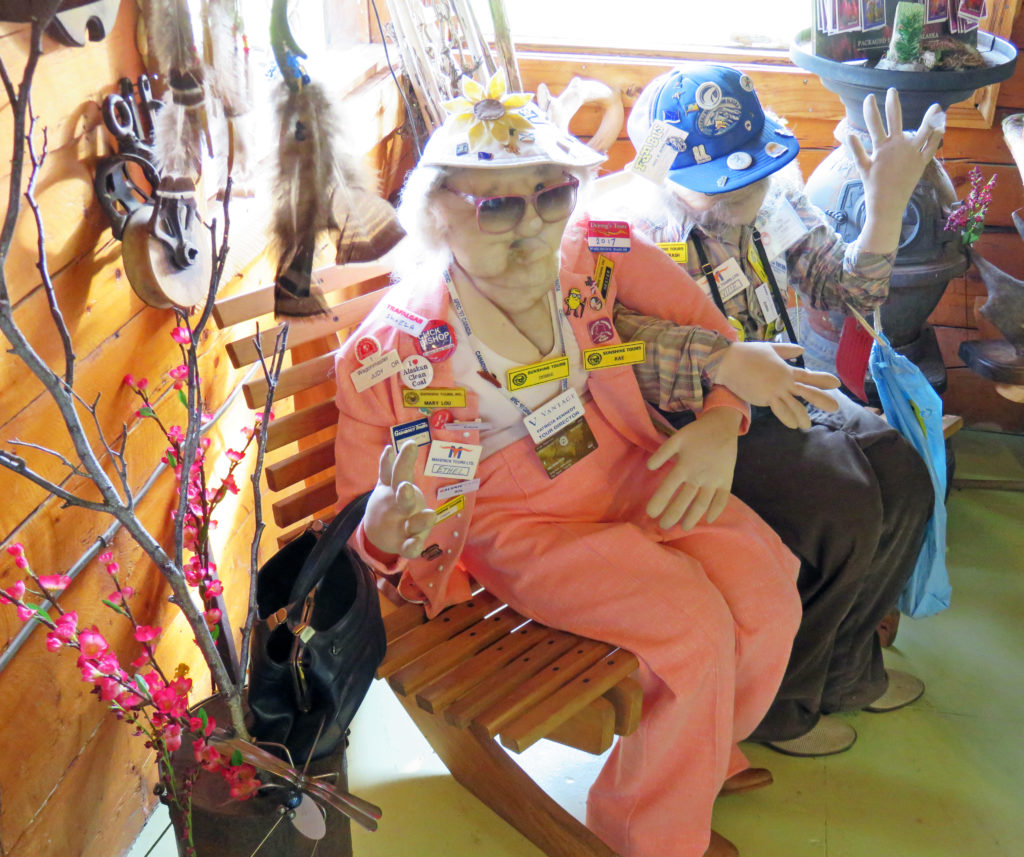
Some tourists still waiting for their bus.
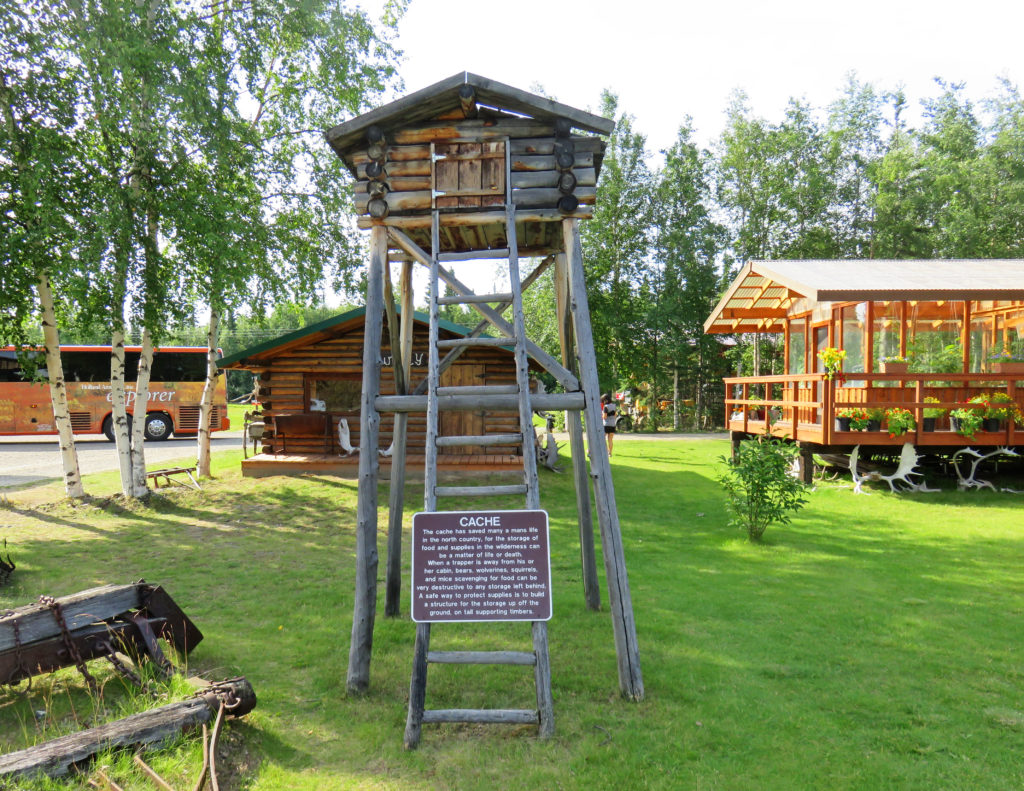
A replica of a cache used for the storage of food and supplies in the wilderness.
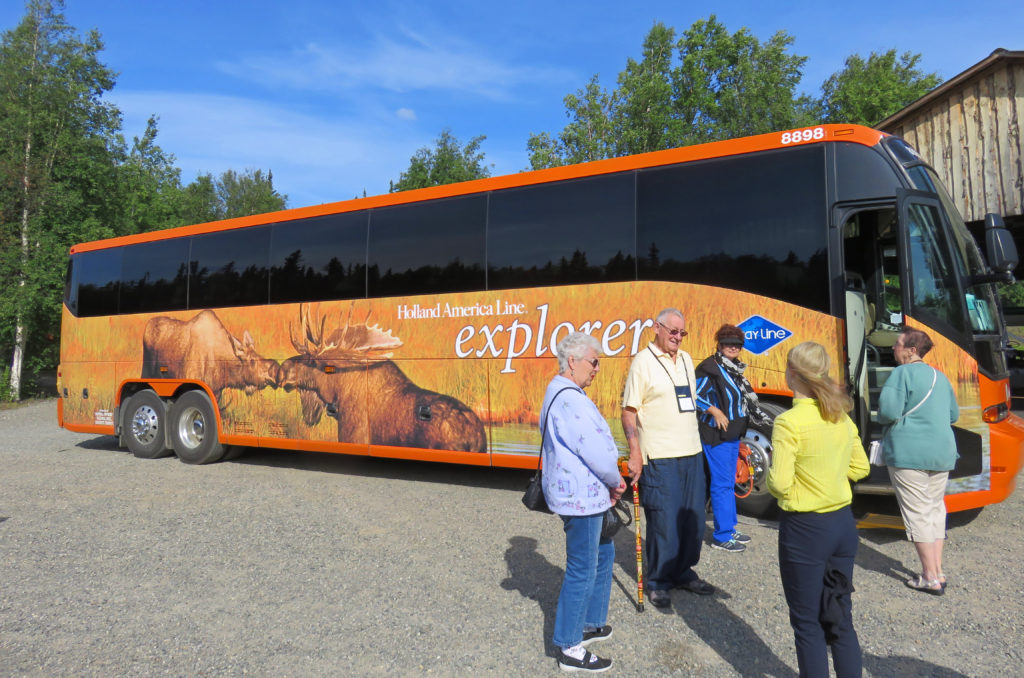
Tourists waiting to board the Explorer to head to Fairbanks.
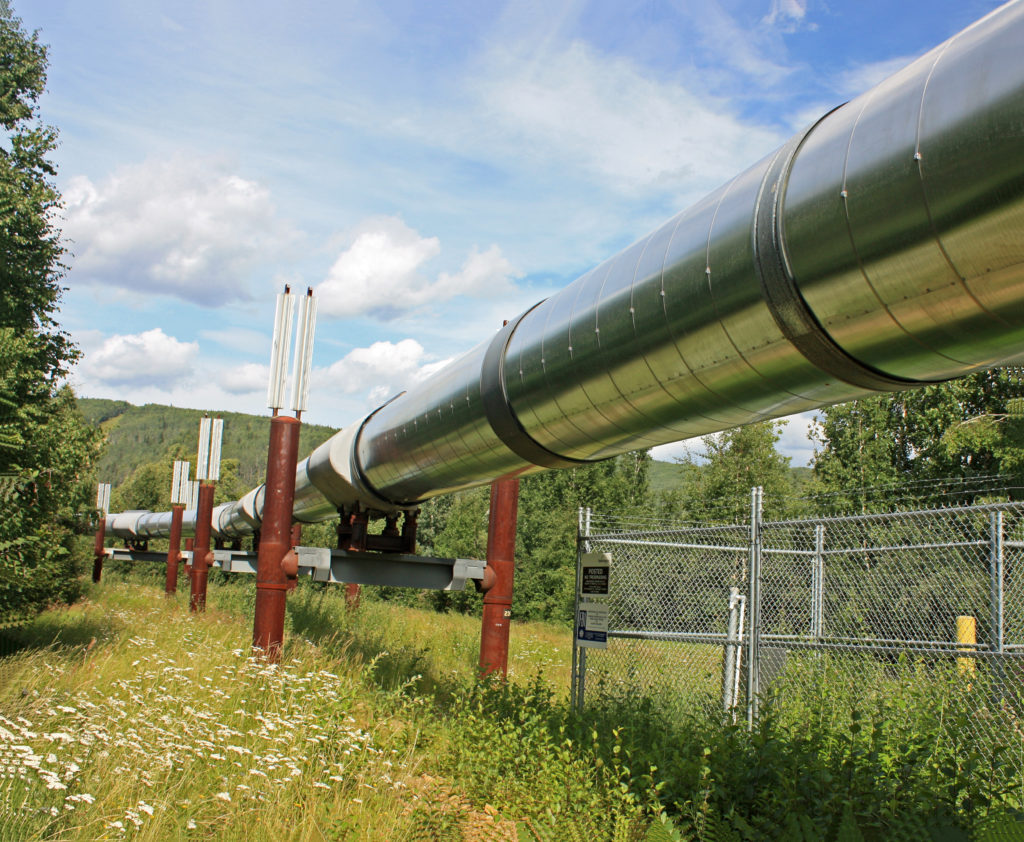
The Trans-Alaska Pipeline in Fox, Alaska.
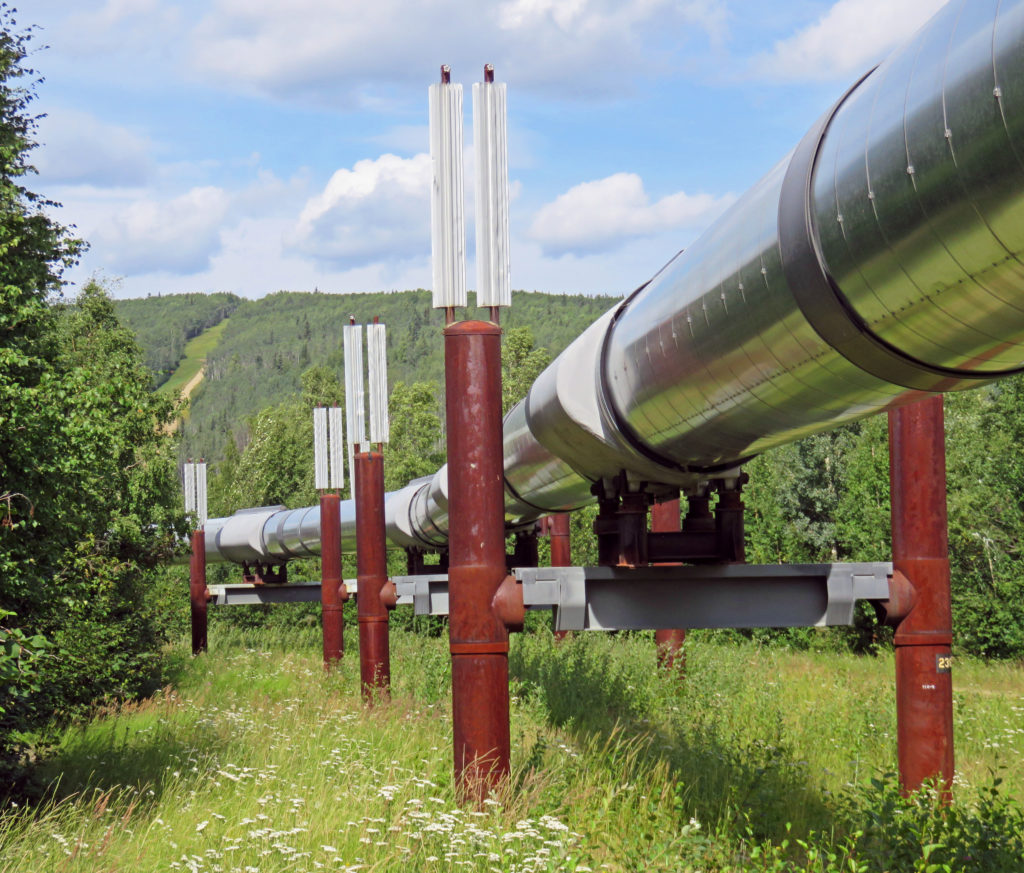
The clear cut area on the hill is where the pipe is buried underground.
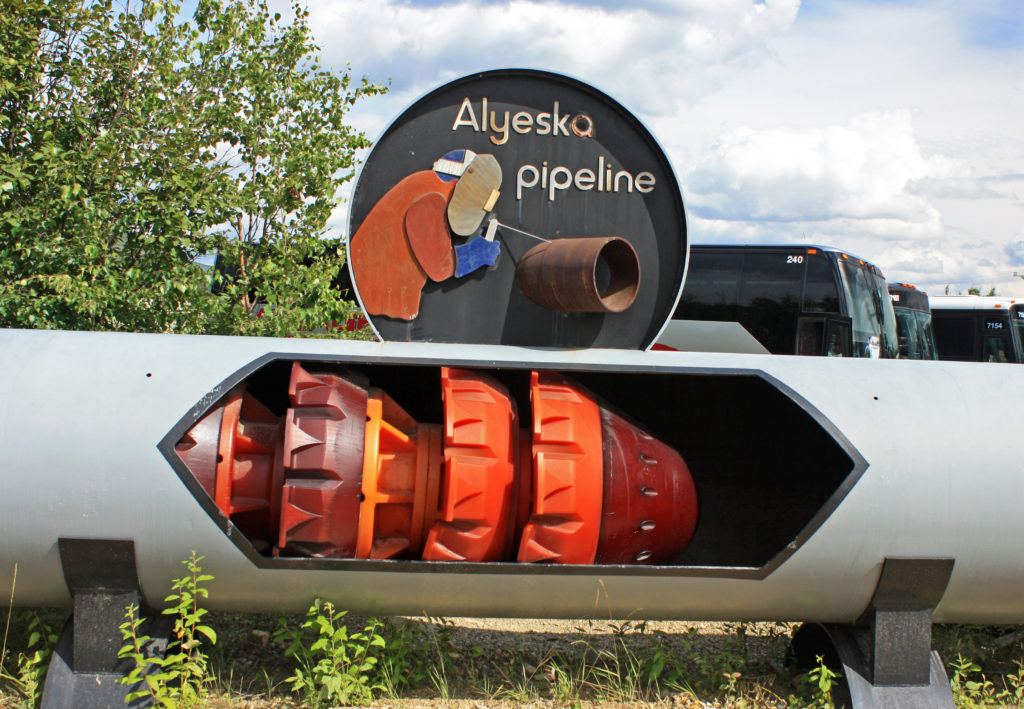
An inside view of a “dumb pig” made out of polyurethane.
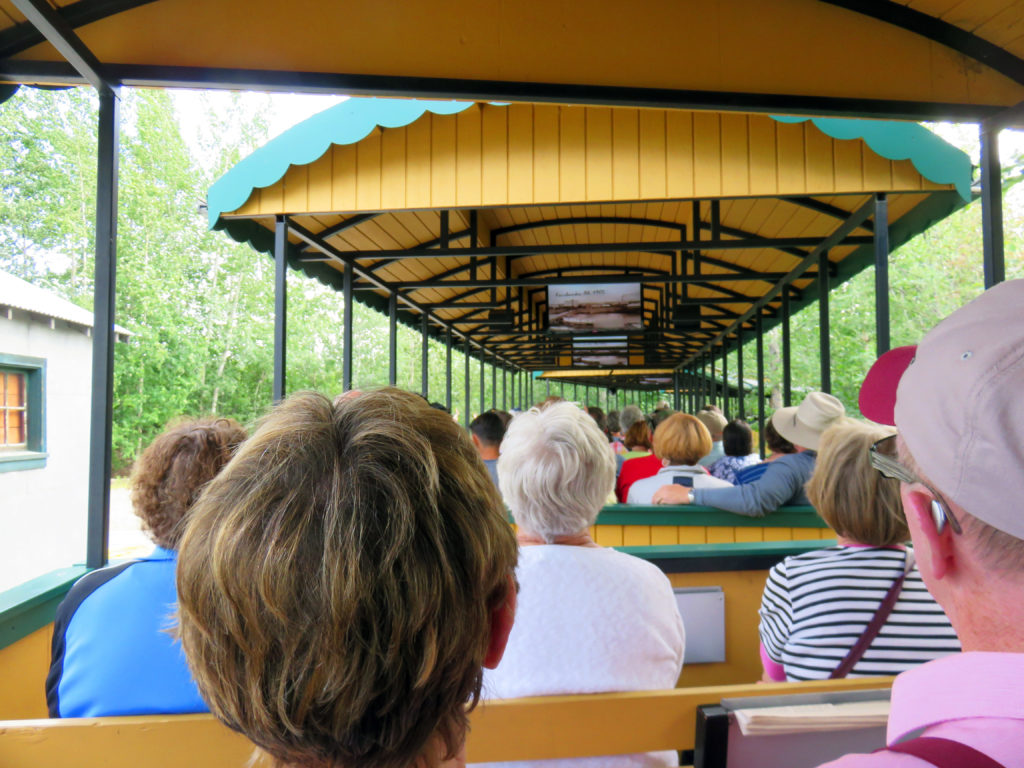
On our way to Gold Dredge 8 in a small open-air train.
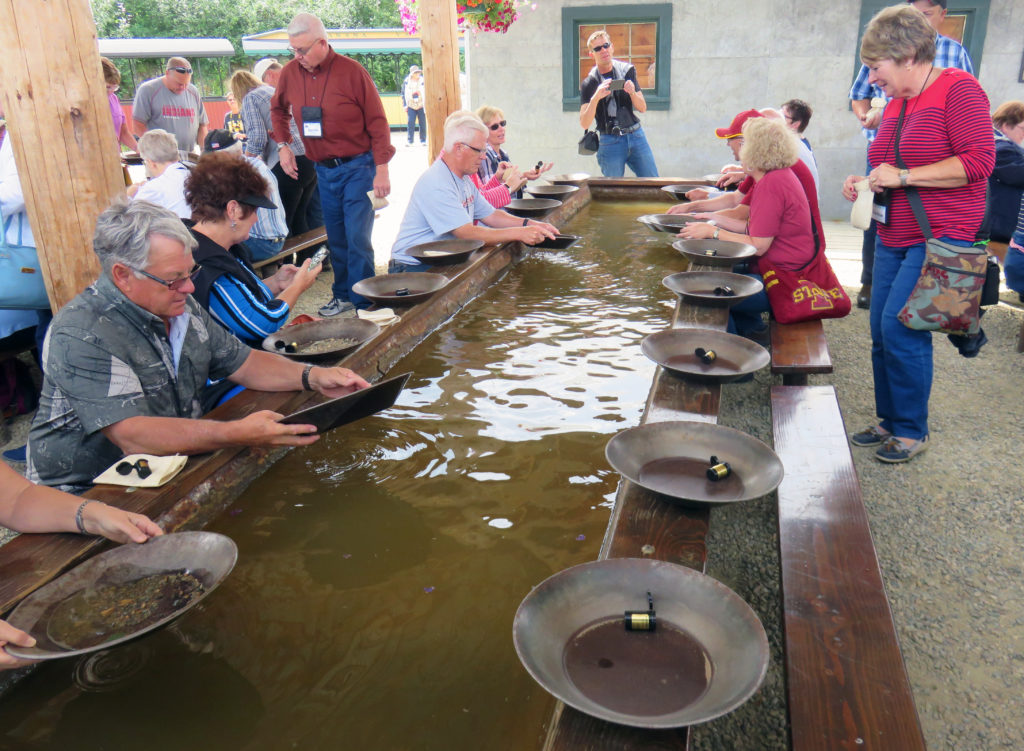
Trying to strike it rich panning for gold.
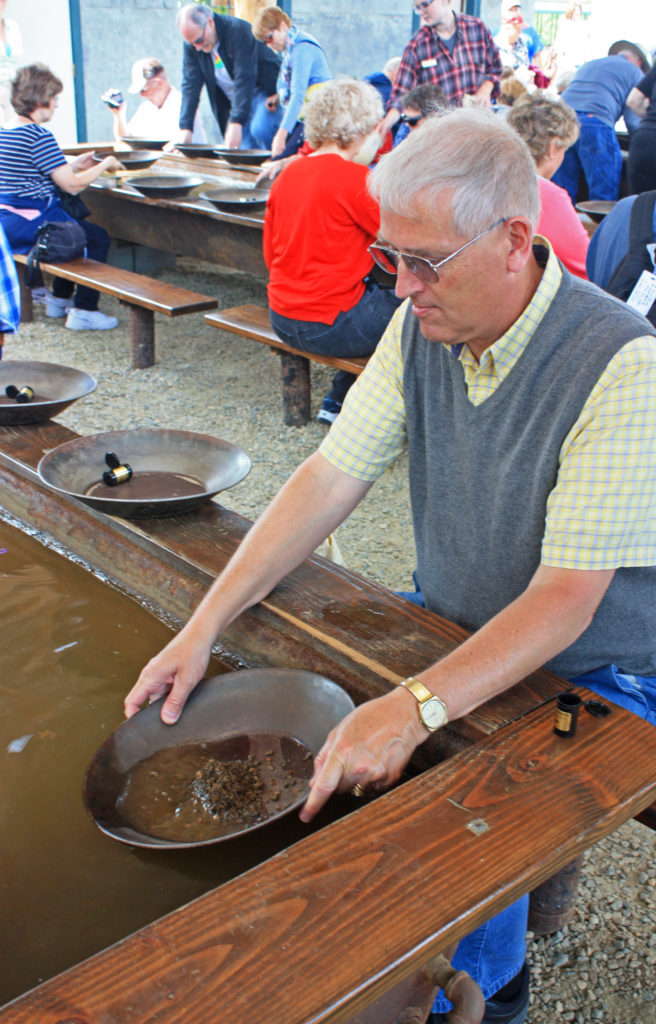
Rodge panning for gold.
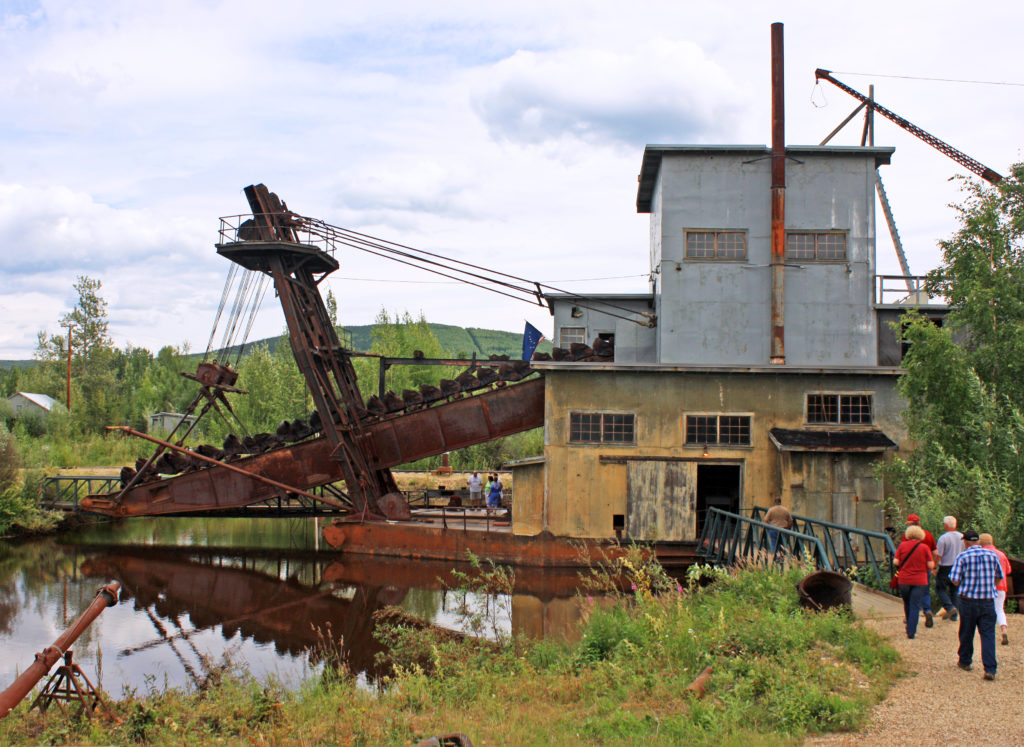
Gold Dredge 8 mining machine.
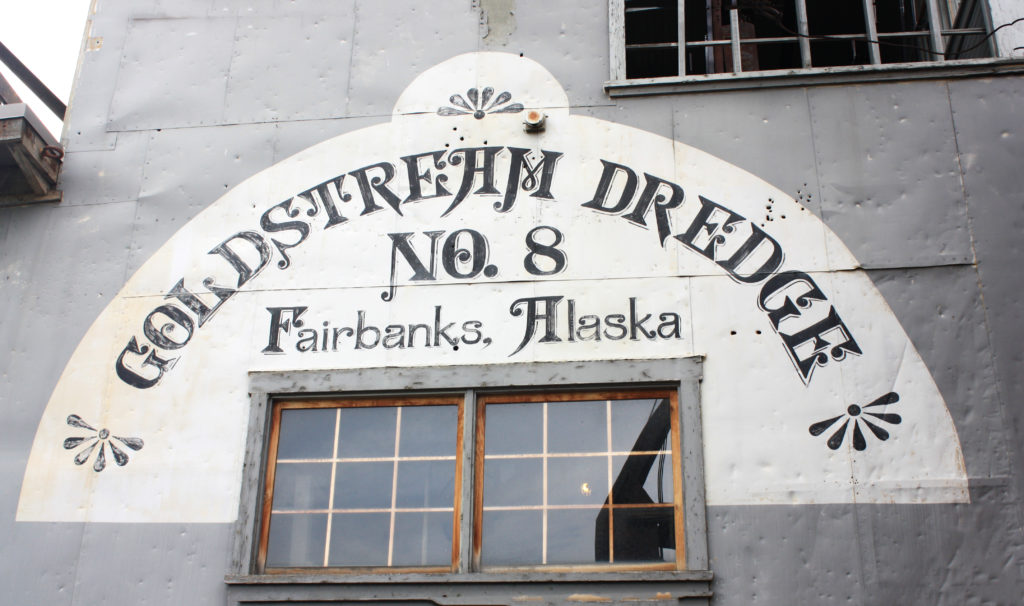
Gold Dredge 8.
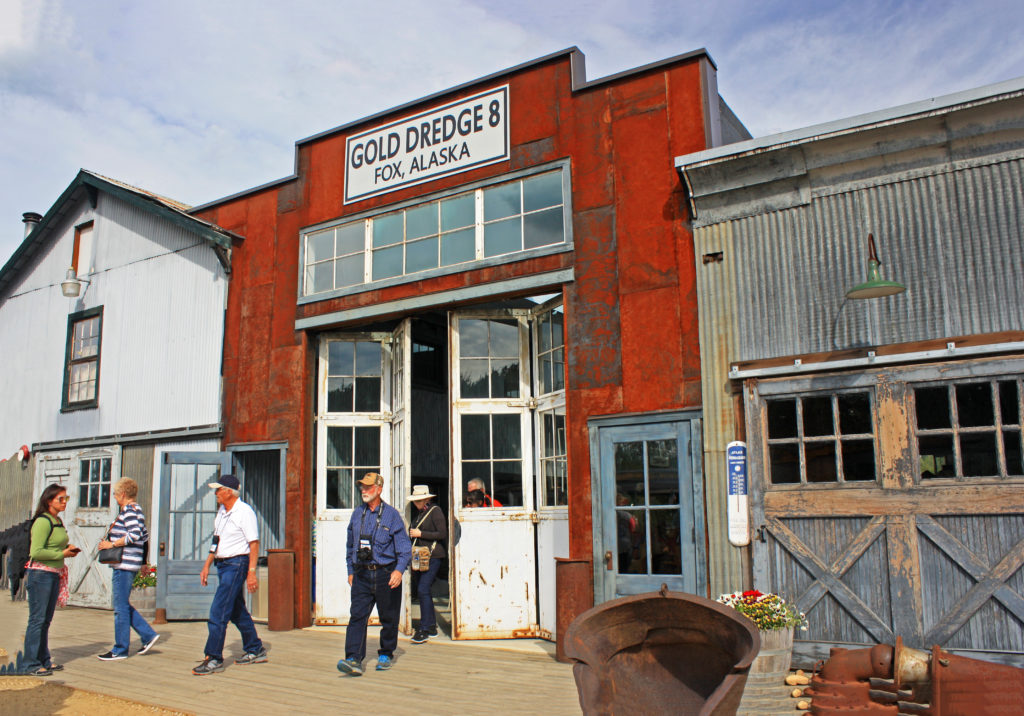
Gold Dredge 8.


Wednesday, November 29th 2017 at 9:44 pm |
The pipeline is crazy! Panning for gold looks fun. Based on the photo with Dad, it looks like his form might have cost him a couple more flakes! Hah!